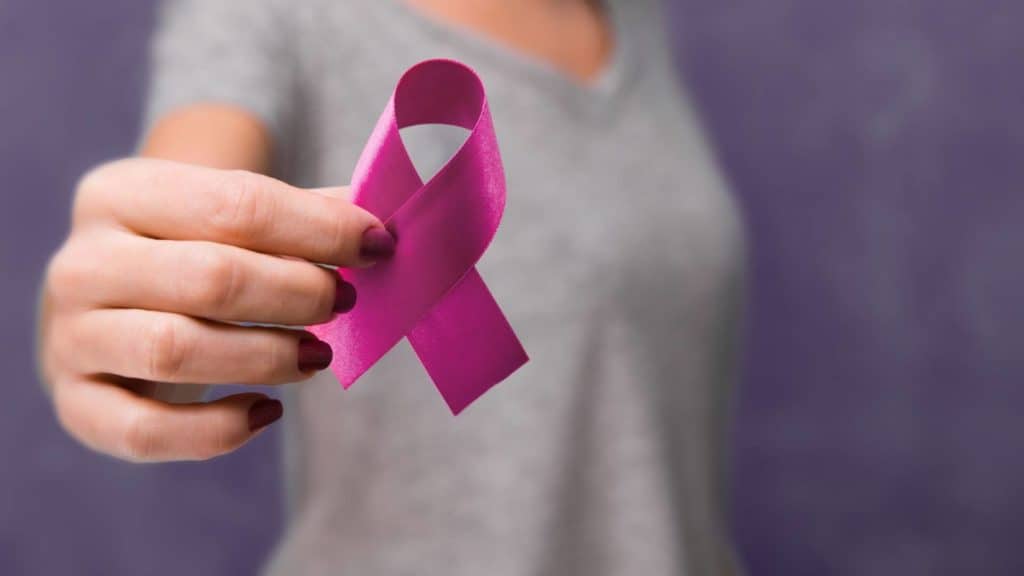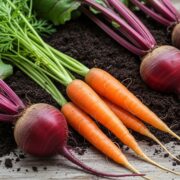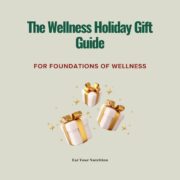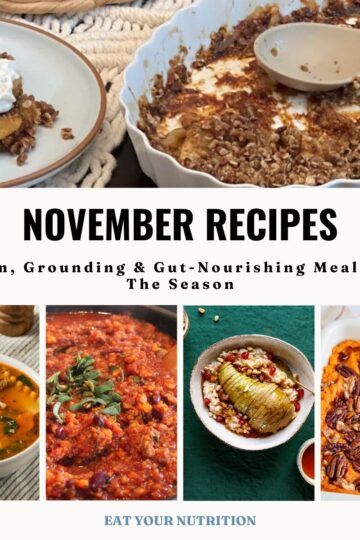I am often asked what is the best diet for fibromyalgia, lupus, and arthritis. What foods we should be eating more of, and which should we be perhaps limited to help with fibromyalgia pain? In this article, I discuss the best diet for those suffering from fibromyalgia, arthritis, and lupus.

Table of Contents
⁉️ What Diet Is Good For Fibromyalgia?
Diet plays a key role in chronic disease prevention, as well as chronic pain conditions. Inflammatory foods can aggravate many health conditions, especially arthritis and fibromyalgia.
So what can we do?
Fibromyalgia is one of the most common chronic pain conditions.
It feels like pain or tenderness sensitive to the touch can happen anywhere throughout the body, and lasts days, weeks, months, or longer.
Fibromyalgia is considered a "pain regulation" or "neurosensory" disorder, because people with fibromyalgia seem to experience more pain and a higher intensity of pain than others, even under gentle pressure. This is thought to be because the brain becomes more sensitive to pain.
❤️ What is Fibromyalgia?
Fibromyalgia pain can come and go throughout the body in "flares" and often occurs along with stiffness, fatigue, "fibro fog," and mental health issues. It can sometimes feel debilitating and cause a lot of distress.
In the U.S., it's estimated that up to 7.7 percent of women and 4.9 percent of men experience fibromyalgia. These rates are higher than in Europe or South America.

⁉️ What Causes Fibromyalgia?
Researchers still don't know exactly what causes fibromyalgia, but it seems not to be the result of physical damage to the bones, joints, or muscles. The pain may be triggered and worsened by infections, injury, inflammation, or emotional stress.
Fibromyalgia tends to occur in families, but no specific genes have yet been found that predispose someone to getting it.
🛑 Typical Signs and Symptoms of Fibromyalgia
Some common symptoms of fibromyalgia include:
- Pain or tenderness in the muscles, soft tissues, and/or bones throughout the body (muscle pain, joint pain), including the arms, legs, head, chest, abdomen, back, and buttocks.
- Numbness or tingling in the arms and legs.
- Fatigue, inability to get a good night's sleep, restless leg syndrome, feeling stiff upon waking up.
- "Fibro fog" (memory problems, confusion, inability to pay close attention or concentrate).
- Headaches (migraines, tension headaches).
- Pain in the face or jaw, temporomandibular joint (TMJ) syndrome.
- Increased sensitivity to light, odors, noise, and temperature.
- Mental health issues (anxiety, depression).
- Gut - Gastrointestinal issues (bloating, constipation, IBS, GERD, difficulty swallowing).
- Painful menstrual periods.
- Overactive bladder, pelvic pain.
The risk for fibromyalgia is higher in people who experience other conditions, such as chronic back pain, lupus, polymyalgia rheumatica, spondylarthritis, osteoarthritis, inflammatory myopathy, systemic inflammatory arthropathies, hypothyroidism, endometriosis, and IBS (irritable bowel syndrome).
It is also possible to experience several of these simultaneously. Fibromyalgia is difficult to diagnose, because there isn't a definitive test for it.
However, your doctor will likely do a physical exam and medical tests to determine which of these you may be experiencing.
⁉️What are Some Food Sensitivities People With Fibromyalgia Should Be Aware Of?
There is some research to suggest that excitotoxins, found in MSG, and artificial sweeteners, like aspartame, can aggravate individuals suffering from fibromyalgia.
🦴 Best and Worst Diet to Eat For Fibromyalgia
Common food sensitivities to gluten, soy, eggs, nightshades, dairy, and even citrus fruits can bother those with arthritis and fibromyalgia. Some trigger foods also include caffeine, alcohol, and even processed meats.
Look into trying out an elimination diet to see if symptoms improve.
🙌 Best Diet for Fibromyalgia Pain
There are many things that you can do to help alleviate these symptoms and reduce the impact of fibromyalgia on your life.
Nutrition, Diet and Fitness Tips To Deal With Fibromyalgia
The first thing is to know that even though it's difficult to diagnose and doesn't have a definitive test, fibromyalgia is a real disease, and research is being done to better understand and eventually cure it.
While there isn't a cure yet, there are ways to manage fibromyalgia symptoms, and self-care plays an important role in reducing its impact.
According to the American College of Rheumatology, "patient self-care is vital to improving symptoms and daily function.
In conjunction with medical treatment, healthy lifestyle behaviors can reduce pain, increase sleep quality, lessen fatigue, and help you cope better with fibromyalgia."

Fibromyalgia and Exercise Recommendations
While more research is underway, physical exercise is currently considered the most effective treatment for fibromyalgia.
Cardiovascular fitness training ("cardio") can ease symptoms by helping with pain and improving sleep. Ideally, doing 30 minutes of cardio three times each week is recommended.
Low-impact exercises like walking, biking, stretching, yoga, tai chi, and water-based exercises are helpful.
If regular exercise is new for you or feels like a lot, simply start low and go slow to create a comfortable routine. It may take time to build up your endurance and the intensity of physical activity that you can do.
⁉️ What is the Best Diet for Fibromyalgia & Arthritis?
Eating a healthy and nutritious diet is also highly recommended. While there currently isn't a huge amount of strong evidence to recommend one specific dietary strategy to help with fibromyalgia symptoms, a few small studies show promising results for the following nutrition recommendations:
Foods Good For Helping Fibromyalgia
- If you are low in vitamin D, taking a supplement can help reduce fibromyalgia pain.
- Additional supplements that may help include Chlorella green algae, Coenzyme Q10, acetyl-L-carnitine, magnesium, iron, vitamins C and E, probiotics, and Nigella sativa (Black cumin) seeds.
- Different types of elimination diets have helped different people, such as the vegetarian diet (eliminates meat, poultry, and fish), vegan diet (eliminates all animal products including dairy and eggs), the low FODMAP diet (reduces intake of short-chain carbohydrates that are fermentable oligo-di-mono-saccharides and polyols), a low calorie diet (reduces calorie intake), gluten-free diet (eliminates the protein gluten), or a diet free from boh MSG (monosodium glutamate) and aspartame (an artificial sweetener).
- The Mediterranean diet has been shown to decrease fatigue and improve moods.
- The replacement of some foods may also help, including replacing non-olive oil fats with olive oil and replacing non-ancient grains with ancient grains like amaranth, quinoa, buckwheat, millet and teff are gluten-free.
- Eat more anti-inflammatory foods. Fruits, vegetables, and foods rich in omega-3 fatty acids like salmon and flaxseed.
📥 GET THIS RECIPE IN YOUR INBOX 📥
🥗 Diet Plan for Fibromyalgia
This is a long list of potential dietary strategies, and more research is needed. Because many of these should not be combined, it's wise to approach these dietary changes cautiously.
So, it's wise to work with a certified nutritionist or other nutrition professional who is knowledgeable in dealing with your symptoms and can work with you to choose the best path forward.
Gluten and Fibromyalgia
Gluten and fibromyalgia are linked. In a study published in 2011, researchers found that people with fibromyalgia who were sensitive to gluten experienced less pain and stiffness after following a gluten-free diet for six weeks.
A gluten-free diet is a treatment option that you may want to discuss with your doctor.
However, not everyone with fibromyalgia should eliminate gluten from their diets. If you don't have celiac disease or a gluten sensitivity, and you don't notice any improvement in your symptoms after eliminating gluten from your diet, then it's unlikely that following a gluten-free diet will help.

💚 Lifestyle Strategies to Deal with Fibromyalgia
Improving sleep patterns and sleep hygiene can also be helpful if you're dealing with fibromyalgia.
For example, try to go to bed and wake up simultaneously each day, and limit stimulants like caffeine and nicotine as much as possible, especially in the evenings. Establish a relaxing nightly routine that may include reduced screen time, dimmed lights, soft music, meditation, and a warm bath.
Also, keep your bedroom comfortable for sleeping by keeping it dark, quiet, and cool.
If you suspect you may have a sleep disorder, such as sleep apnea, contact your healthcare provider.

Fibromyalgia and Stress
Managing stress and moods can also help relieve symptoms. If you experience symptoms of fibromyalgia, pace yourself and balance your need to work and rest by taking breaks when necessary.
Also, make time to relax each day and try deep breathing, progressive muscle relaxation, mindfulness, and stress reduction techniques.
In addition, if if you feel lonely or isolated, consider joining a support group that you find positive and encouraging-one that shares helpful coping techniques.
Cognitive behavioral therapy (with a therapist or counselor) may help focus on how thoughts and behaviors affect pain and other symptoms. If you have any mental health concerns, such as anxiety or depression, seek professional help.
If necessary, consider reaching out to your healthcare provider about prescription medications that can help with fibromyalgia.

🧡 Final Thoughts On What Diet Is Good For Fibromyalgia
Fibromyalgia is a complex condition of chronic widespread pain. It's thought to result from the brain becoming more sensitive to pain signals, as if even a small signal becomes amplified and feels much stronger.
In addition to the pain, people with fibromyalgia tend to also have difficulty sleeping and experience fatigue, stiffness, changing moods, and "fibro fog."
The American College of Rheumatology recommends you "look forward, not backward. Focus on what you need to do to get better, not what caused your illness." Self-care is the mainstay for improving symptoms of fibromyalgia.
Current research suggests the most effective treatment is physical activity. In addition, there are several dietary and lifestyle strategies that can help, including certain diets and supplements, improving sleep, and managing stress.
So, now that you know, there are fitness, nutrition, and lifestyle strategies you can use to help manage fibromyalgia symptoms.
If you're looking for support in making these changes, consult a certified registered nutritionist or nutrition professional who can help.
I offer nutrition coaching, so if you would like to work one-on-one with me, check out my coaching page.
Looking for relief from fibromyalgia symptoms? Want help creating an achievable plan so that you can ease the pain, fatigue, stiffness, and "fibro fog"?
Need support to best implement these dietary and lifestyle habits into your life in the safest and most effective way?
Book an appointment with me today to see if my coaching services can help you.
🗣️ Let's Discuss the Best Diet for Fibromyalgia!
So, now you know which foods help with fibromyalgia, lupus, and arthritis, which foods will you start including more into your diet?
Did you find this article discussing what is the best diet for fibromyalgia helpful? Will you keep these nutrition tips on fibromyalgia handy?
You can also connect with me @EatYourNutrition on Instagram. I love seeing your photos. #EatYourNutrition #LauraVillanueva
📚 References
- American College of Rheumatology. (2021, December). Fibromyalgia fast facts. https://www.rheumatology.org/I-Am-A/Patient-Caregiver/Diseases-Conditions/Fibromyalgia
- Bhargava, J. & Hurley, J. A. (2021, October 13). Fibromyalgia. In: StatPearls [Internet]. Treasure Island (FL): StatPearls Publishing; 2022 Jan-. https://www.ncbi.nlm.nih.gov/books/NBK540974/
- Lowry, E., Marley, J., McVeigh, J. G., McSorley, E., Allsopp, P., & Kerr, D. (2020). Dietary Interventions in the Management of Fibromyalgia: A Systematic Review and Best-Evidence Synthesis. Nutrients, 12(9), 2664. https://doi.org/10.3390/nu12092664 https://www.ncbi.nlm.nih.gov/pmc/articles/PMC7551150/
- Mayo Clinic. (2020, February 18). Fibromyalgia pain: Options for coping. https://www.mayoclinic.org/diseases-conditions/fibromyalgia/in-depth/fibromyalgia-pain/ART-20047867?p=1
- MedlinePlus. (2021, October 20). Fibromyalgia. https://medlineplus.gov/fibromyalgia.html
- National Center for Complementary and Integrative Health. (2016, May). Fibromyalgia: In depth. https://www.nccih.nih.gov/health/fibromyalgia-in-depth
- National Institute of Arthritis and Musculoskeletal and Skin Diseases. (2021, June). Fibromyalgia. https://www.niams.nih.gov/health-topics/fibromyalgia
- National Institute of Arthritis and Musculoskeletal and Skin Diseases. (2021, June). Fibromyalgia: Diagnosis, treatment, & steps to take. https://www.niams.nih.gov/health-topics/fibromyalgia/diagnosis-treatment-and-steps-to-take
- Pagliai, G., Giangrandi, I., Dinu, M., Sofi, F., & Colombini, B. (2020). Nutritional Interventions in the Management of Fibromyalgia Syndrome. Nutrients, 12(9), 2525. https://doi.org/10.3390/nu12092525 https://www.ncbi.nlm.nih.gov/pmc/articles/PMC7551285/
- Silva, A. R., Bernardo, A., Costa, J., Cardoso, A., Santos, P., de Mesquita, M. F., Vaz Patto, J., Moreira, P., Silva, M. L., & Padrão, P. (2019). Dietary interventions in fibromyalgia: a systematic review. Annals of medicine, 51(sup1), 2-14 https://www.ncbi.nlm.nih.gov/pmc/articles/PMC7888848/


















Comments
No Comments